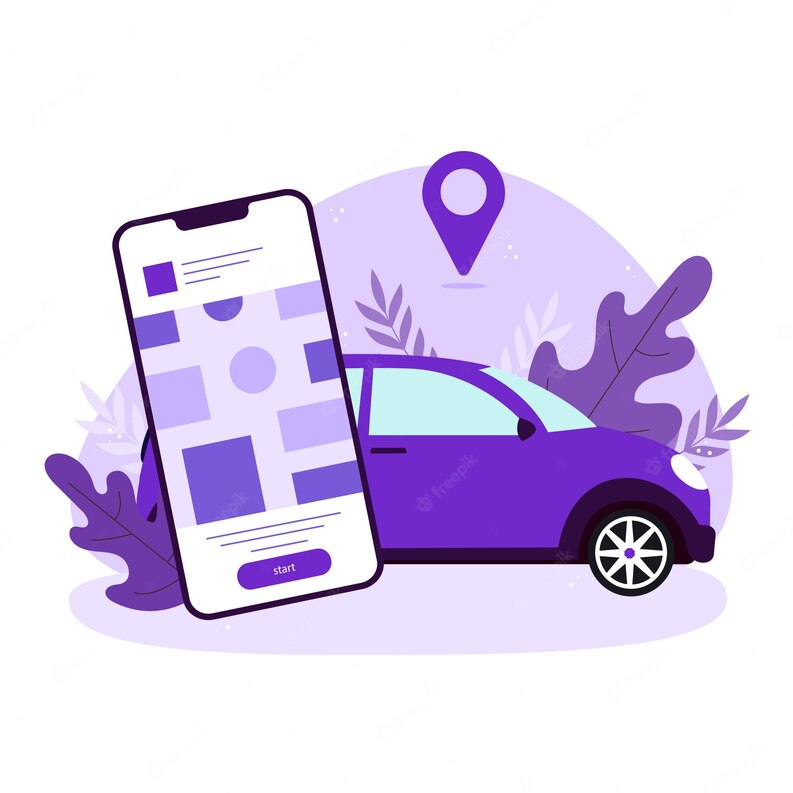
Introduction
In the era of smartphones and on-demand services, taxi booking apps have become a crucial part of our everyday lives. While Uber is frequently seen as the pioneer of this industry, other taxi-booking apps serve different markets and have unique features. When looking to build an uber app or a similar taxi-booking app, it’s vital to understand the key differences between building an Uber-like app and a traditional taxi-booking app. In this blog post, we will examine these key differences in detail.
Business Model
One of the most significant differences between Uber-like apps and traditional taxi-booking apps lies in their business models:
- Uber-Like App: Uber popularized the ride-sharing model, where anyone with a car can become a driver. These apps connect riders with nearby drivers, creating a peer-to-peer transportation network. Drivers are independent contractors, and fares are typically calculated based on distance and time.
- Taxi Booking App: Traditional taxi booking apps work with licensed taxi companies or individual taxi operators. They often have a fleet of professional drivers who are employed by the company or licensed to operate taxis. Fares are generally based on a combination of distance and time, often with predetermined rates.
Driver Requirements
The requirements for drivers on these platforms also differ significantly:
- Uber-Like App: Uber and similar apps usually have more relaxed requirements for drivers. They may require a valid driver’s license, a car that meets specific criteria, and a background check. Drivers are independent contractors who use their vehicles.
- Taxi Booking App: Traditional taxi booking apps typically require drivers to obtain professional taxi licenses and meet stricter vehicle standards. Drivers are often employees of taxi companies, subject to regular background checks, and trained in providing customer service.
Vehicle Standards
Vehicle standards are another point of contrast:
- Uber-Like App: These apps often allow a broader range of vehicle types, including personal cars, which must meet specific criteria such as age, condition, and insurance coverage. Vehicles may or may not be marked as taxis.
- Taxi Booking App: Traditional taxi apps have strict vehicle standards. Taxis must meet specific requirements for size, age, condition, and safety features. They are typically well-marked and easily recognizable as taxis.
Pricing
Pricing structures vary significantly:
- Uber-Like App: Ride-sharing apps often use dynamic pricing, which means fares can vary based on demand and supply. They may also offer different service levels, such as economy, premium, and shared rides.
- Taxi Booking App: Traditional taxi apps usually have fixed fares or a metered system, with prices regulated by local authorities. These fares are consistent, regardless of demand or time of day.
Availability
Availability is another key difference:
- Uber-Like App: These apps are known for their high availability, as they rely on a large network of independent drivers. You can typically find a ride quickly, even in less densely populated areas.
- Taxi Booking App: Traditional taxi apps may have limited availability, especially in less populated or rural areas. They often operate within specific city or regional boundaries.
Regulation and Licensing
Regulation and licensing play a significant role in shaping both types of apps:
- Uber-Like App: Ride-sharing apps have faced regulatory challenges in many regions due to their disruptive business model. They often need to navigate complex legal and licensing issues.
- Taxi Booking App: Traditional taxi apps are usually subject to strict regulation and licensing requirements, which can vary by location. They often have to comply with established taxi industry standards.
Payment Methods
Payment methods differ in these apps:
- Uber-Like App: Ride-sharing apps typically offer various payment options, including credit cards, mobile wallets, and cash in some markets. Payment is often made through the app, reducing the need for cash transactions.
- Taxi Booking App: Traditional taxi apps may offer fewer payment options, with cash being a more common method. Credit card payments may also be available but are not as widespread as in Uber-like apps.
User Experience
User experience is a crucial factor in the success of any app, and it differs between these two types:
- Uber-Like App: Uber and similar apps prioritize a seamless user experience. Users can request rides with a few taps on their smartphones, track their driver’s location in real time, and rate their experience afterward. The app often provides detailed information about the driver and the vehicle.
- Taxi Booking App: Traditional taxi apps may have a more straightforward interface but lack some of the features offered by ride-sharing apps. Users can usually book a taxi, view the estimated arrival time, and pay for the ride through the app. However, the user experience may not be as sophisticated as that of Uber-like apps.
Driver Income and Benefits
The income and benefits for drivers can vary significantly:
- Uber-Like App: Drivers on ride-sharing apps are typically considered independent contractors. They have the flexibility to choose their working hours and use their own vehicles. However, this independence comes at the cost of not receiving traditional employment benefits such as health insurance, retirement plans, or paid time off. Driver earnings can fluctuate based on factors like demand and the number of completed rides.
- Taxi Booking App: Traditional taxi drivers are often employed by taxi companies or operate their own licensed taxi businesses. They may receive more stable income and benefits such as health coverage and retirement plans. However, they have less flexibility in setting their work schedules and may be subject to stricter regulations and oversight.
Geographic Expansion
Expanding into new markets can be approached differently:
- Uber-Like App: Ride-sharing apps often expand rapidly into new markets and cities. They can onboard new drivers quickly and adapt to local demand. However, they may face regulatory hurdles and opposition from traditional taxi services in some regions.
- Taxi Booking App: Traditional taxi apps may expand more slowly due to the need to establish partnerships with local taxi companies and navigate complex licensing requirements. This can limit their ability to enter new markets rapidly.
Market Segmentation
Understanding the target market is crucial:
- Uber-Like App: Ride-sharing apps typically target a broad demographic, including both urban and suburban areas. They often aim to provide a cost-effective alternative to traditional taxis and public transportation.
- Taxi Booking App: Traditional taxi apps may focus more on serving specific demographics, such as business travelers, tourists, or residents of urban areas where taxi services are well-established.
Competition
Competition in the industry can impact app development:
- Uber-Like App: Ride-sharing apps often face fierce competition not only from other ride-sharing platforms but also from taxi companies and public transportation services. They need to continuously innovate to stay ahead.
- Taxi Booking App: Traditional taxi apps may face less direct competition from other taxi booking apps but may still compete with ride-sharing services in some regions. Their challenge lies in adapting to changing consumer preferences and technological advancements.
Conclusion
While both Uber-like apps and traditional taxi-booking apps provide transportation services, their differences in business models, driver requirements, vehicle standards, pricing, availability, regulation and licensing, payment methods, user experience, driver income, geographic expansion, market segmentation, and competition shape their distinct identities and difficulties. When creating such an app it’s crucial to carefully consider these distinctions and tailor your strategy to satisfy the unique requirements of your target market while complying with local regulations. Ultimately, success in this industry depends on offering a reliable, convenient, and customer-friendly service that aligns with your chosen business model.

